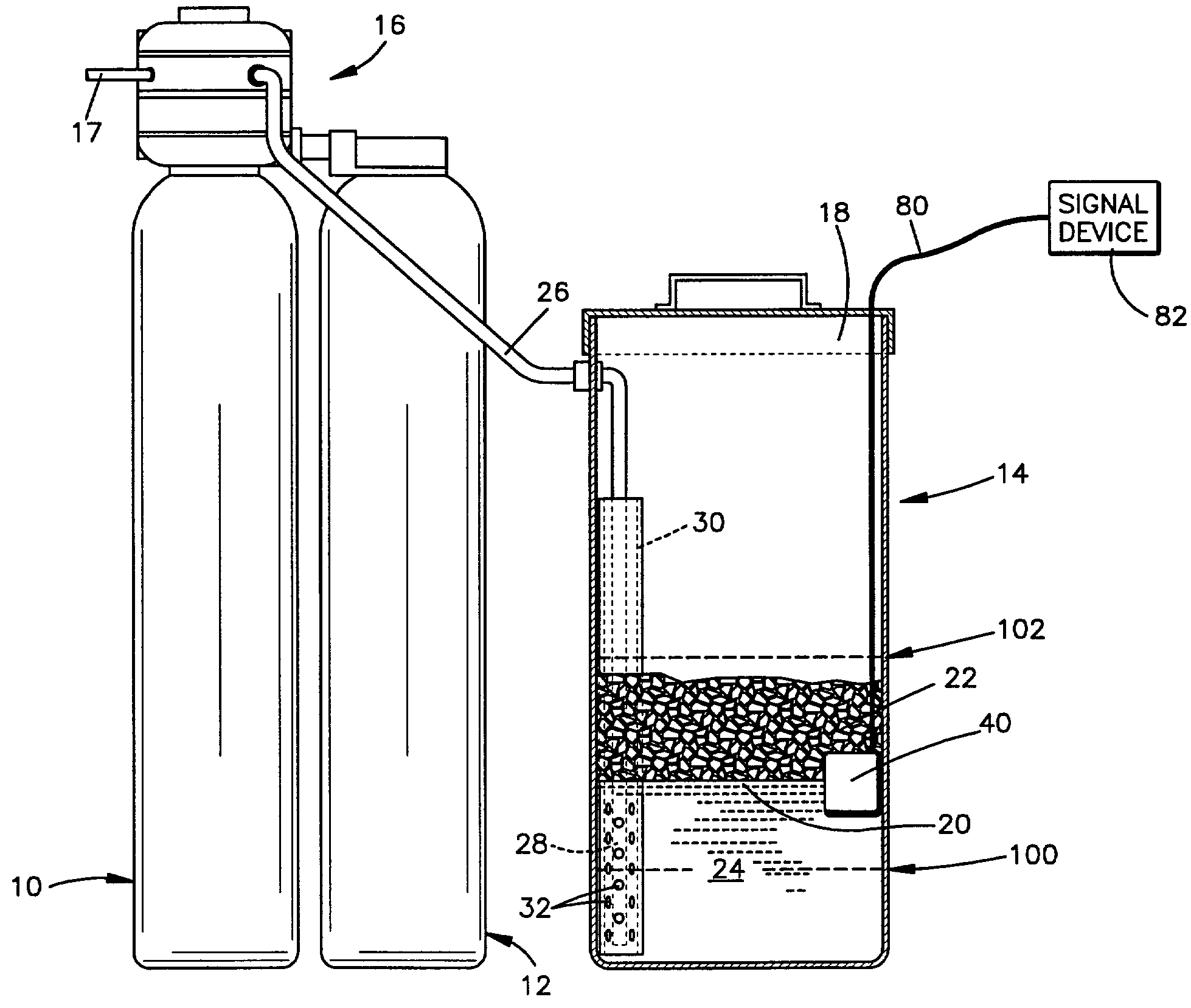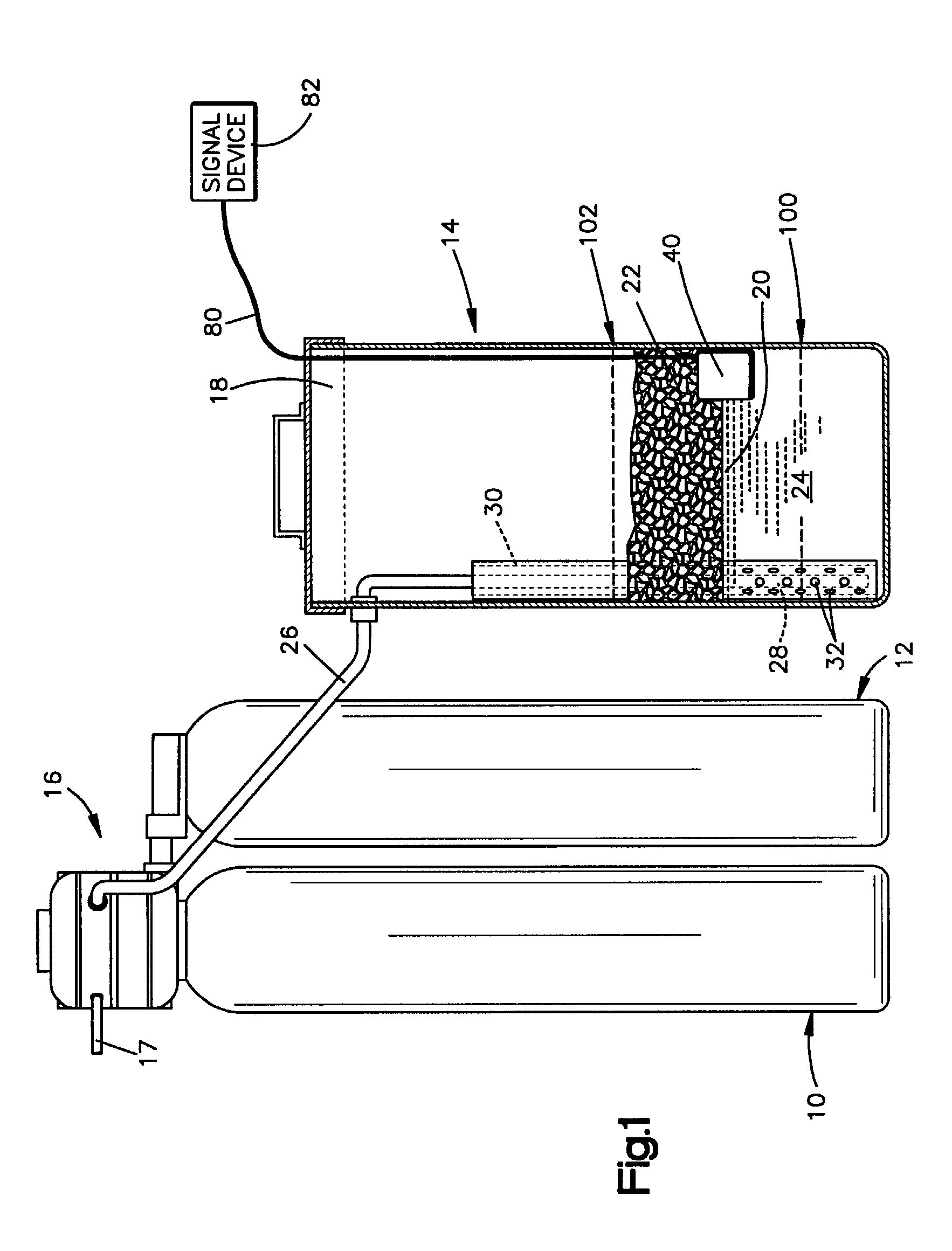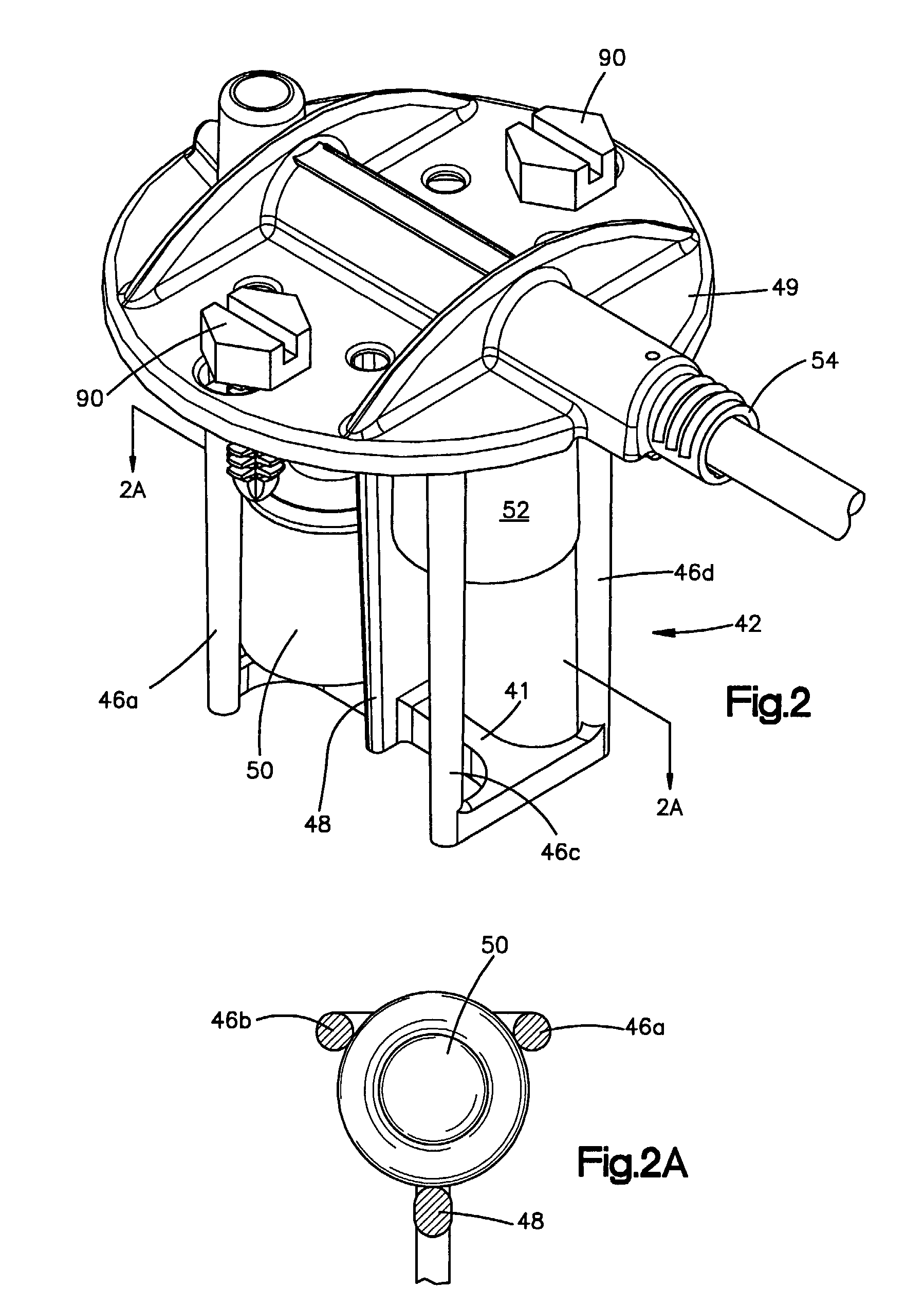Apparatus and method for detecting a change in a specific gravity of a fluid
a technology of specific gravity and apparatus, which is applied in the direction of bends, instruments, separation processes, etc., can solve the problems of operator forgetfulness and error, unsatisfactory, and unsatisfactory, and achieve the effect of reducing the hysteresis of the contact to remain closed
- Summary
- Abstract
- Description
- Claims
- Application Information
AI Technical Summary
Benefits of technology
Problems solved by technology
Method used
Image
Examples
Embodiment Construction
[0027]FIG. 1 illustrates the overall construction of a water softener system that incorporates the present invention. Although a water treatment system is described, the present invention can be employed in any system where fluid treatment is desired. The system shown includes a pair of fluid treatment tanks 10, 12, an upstanding brine tank 14 and a valve assembly 16 fastened to the tanks 10, 12. The valve 16 controls the usage and regeneration of the tanks 10, 12 and is operative to connect one of the tanks 10, 12 to a water supply or other supply where fluid treatment is required and further controls the regeneration of an exhausted tank. A drain conduit 17 connected to the valve 16 discharges brine solution and “backwash” fluid during a regeneration cycle.
[0028]The brine tank 14 is of known configuration and comprises a cylindrical, upstanding container capped by a removable cover 18. A salt grid 20 is disposed horizontally across the container a predetermined distance above the ...
PUM
| Property | Measurement | Unit |
|---|---|---|
| specific gravity | aaaaa | aaaaa |
| specific gravity | aaaaa | aaaaa |
| horizontal distance | aaaaa | aaaaa |
Abstract
Description
Claims
Application Information
 Login to View More
Login to View More - R&D
- Intellectual Property
- Life Sciences
- Materials
- Tech Scout
- Unparalleled Data Quality
- Higher Quality Content
- 60% Fewer Hallucinations
Browse by: Latest US Patents, China's latest patents, Technical Efficacy Thesaurus, Application Domain, Technology Topic, Popular Technical Reports.
© 2025 PatSnap. All rights reserved.Legal|Privacy policy|Modern Slavery Act Transparency Statement|Sitemap|About US| Contact US: help@patsnap.com



